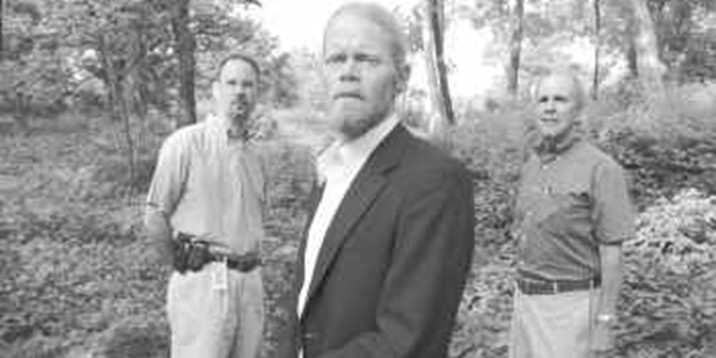
Logging Some Volunteer Time: Citizen Foresters to Learn How to Protect Trees in Dallas Neighborhoods

As chairman of the Urban Forest Advisory Committee, Steve Houser (front) will work with volunteer citizen foresters. Joining him are Michael Hellmann (left), of the Dallas parks department, and Eric Larner, a citizen foresters team leader. Photo by Rex C. Curry/Special Contributor to DMN.

Published June 6, 2008, By CAROLYN TILLERY
There's a new neighborhood watch in North Dallas, and organizers are hoping it'll open some eyes.
"These volunteers have the opportunity to have a real and lasting impact on the city by helping identify and protect our trees," said Steve Houser, chairman of the city's Urban Forest Advisory Committee.
Those interested in becoming citizen foresters will be trained in the classroom and in the field. They'll learn basic skills to protect trees in their neighborhood.
The sessions cover topics such as tree identification, planting and pruning skills, and the basic benefit of trees to the city. The program also addresses, with the assistance of TXU Energy, appropriate tree plantings near utility lines.
Classes are two to three hours long followed by a couple of hours of field training. An evenings and weekends class is planned for the fall.
Once trained, volunteers return at least 25 hours to the city by providing hands-on assistance.
"We have a crew that just plants trees," Mr. Houser said. "At Reverchon Park we have an inventory of trees, and it's likely we'll be doing other tree surveys throughout the city."
In addition to public education programs, cataloging and planting trees, the volunteers can also be the eyes and ears of the city, Mr. Houser said.
"If they see a hazardous tree -- which they're trained to identify -- they will be able to report it and have it removed before it falls on someone or something," he said.
Dallas' Great Trinity Forest is among the largest urban hardwood forests in the county, and at almost 8,000 acres, volunteers are needed to help preserve it, he said.
"It's an ideal way for the public to get involved and make a difference and learn from experts along the way," Mr. Houser said. "How often has the public been given an opportunity to change the face of Dallas with a few volunteer programs?"
Mr. Houser confesses to a lifelong love affair for sturdy oaks, swaying pines and blooming pecans. He claims a particular fondness for a bur oak in Plano.
"That's my favorite tree," he said. "We were able to determine that the tree is at least 500 years old -- probably closer to 600. Imagine -- these rings could tell us when buffalo and Indians played beneath it?
"The odds of trees reaching 500 years old are greater with the more volunteers we have out there working to identify and protect them."
